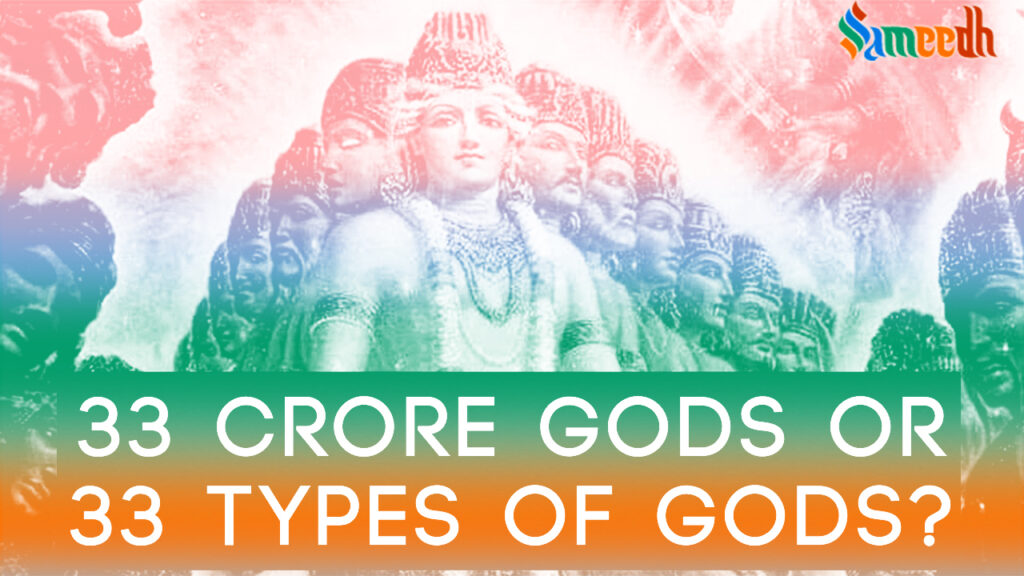The confusion between “33 Koti” and “33 Crores” in Hinduism arises from a misunderstanding of the term “Koti.” The term “Koti” is used in different ways in the Indian context, and its translation into English as “Crore” has led to the confusion.

The confusion between “33 Koti” and “33 Crores” in Hinduism arises from a misunderstanding of the term “Koti.” The term “Koti” is used in different ways in the Indian context, and its translation into English as “Crore” has led to the confusion. “Crore” is a term used to represent ten million in the Indian numbering system. However, in the context of “33 Koti” gods and goddesses, “Koti” refers to categories or types, not a numerical value.
The confusion between “33 Koti” and “33 Crores” in Hinduism is a result of linguistic and translational challenges, as well as cultural and historical factors. Here’s a possible explanation for how this confusion might have arisen:
- Linguistic Ambiguity: The term “Koti” in Sanskrit has multiple meanings, including “type,” “category,” “excellence,” and “ten million.” In the context of the “33 Koti” gods and goddesses, it refers to categories or types. However, when translating this term into English, “Crore” (which means ten million) has been used, leading to a numerical interpretation instead of a categorical one.
- Cultural and Translational Differences: Translating complex religious and philosophical concepts from one language to another is challenging, especially when the concepts have cultural and spiritual significance. Nuances can be lost in translation, and terms might be misunderstood or misinterpreted in the process.
- Miscommunication Over Time: Over the centuries, as Hinduism’s teachings spread and were encountered by people from different linguistic and cultural backgrounds, misunderstandings and misinterpretations could have emerged. Oral traditions, texts, and teachings might have been misinterpreted or translated in ways that perpetuated the confusion.
- Simplification for Explanation: To help explain complex ideas to those unfamiliar with Hinduism, the concept of “33 Crores” might have been presented as a way to simplify the diverse pantheon. However, this oversimplification loses the essence of the “33 Koti” concept, which is about diverse categories of divine manifestations.
- Misinformation Propagation: Once a misunderstanding takes root, it can be perpetuated through various means, including literature, media, and popular discourse. The misinterpretation might have been reinforced through generations.
It’s important to note that there isn’t a specific person or source that can be directly blamed for the confusion. Instead, it’s a result of various factors over time. To understand religious concepts accurately, it’s recommended to consult reliable sources and scholars who can provide insights into the original meanings and intentions behind these concepts.
